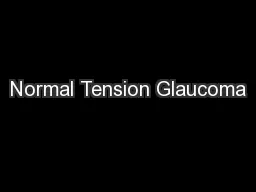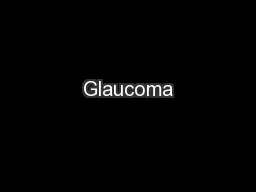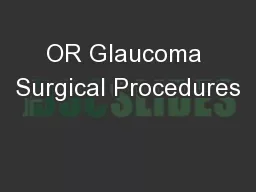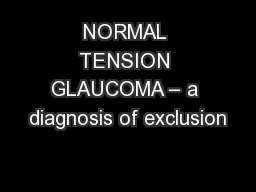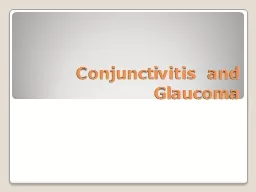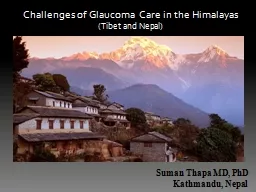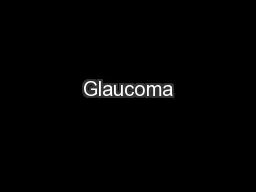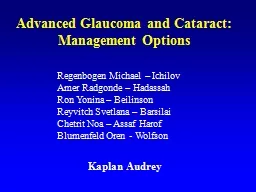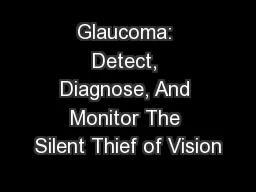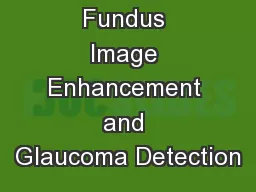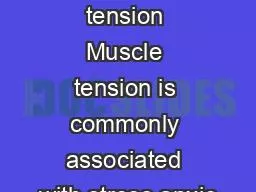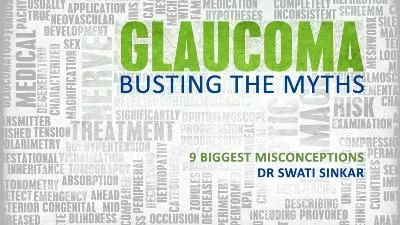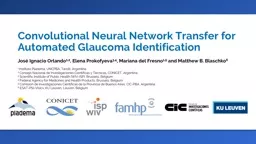PPT-Normal Tension Glaucoma
Author : cheryl-pisano | Published Date : 2016-10-06
Diagnosis and Therapy Audrey KaplanMessas Head of glaucoma service Assaf Harofe Medical center NTG think about it How common is NTG Population studies 3040 Sommer
Presentation Embed Code
Download Presentation
Download Presentation The PPT/PDF document "Normal Tension Glaucoma" is the property of its rightful owner. Permission is granted to download and print the materials on this website for personal, non-commercial use only, and to display it on your personal computer provided you do not modify the materials and that you retain all copyright notices contained in the materials. By downloading content from our website, you accept the terms of this agreement.
Normal Tension Glaucoma: Transcript
Download Rules Of Document
"Normal Tension Glaucoma"The content belongs to its owner. You may download and print it for personal use, without modification, and keep all copyright notices. By downloading, you agree to these terms.
Related Documents

